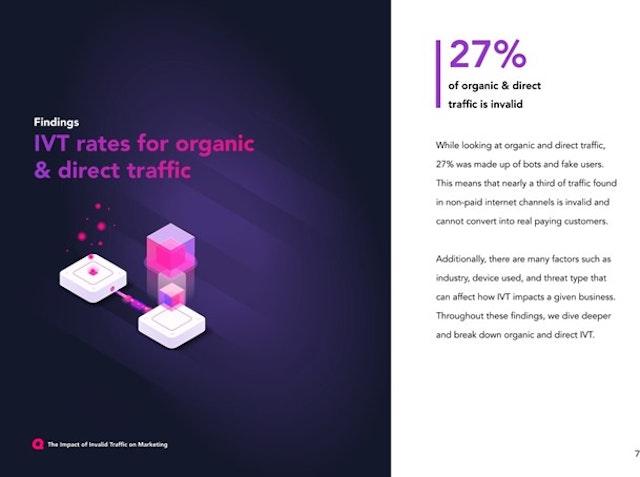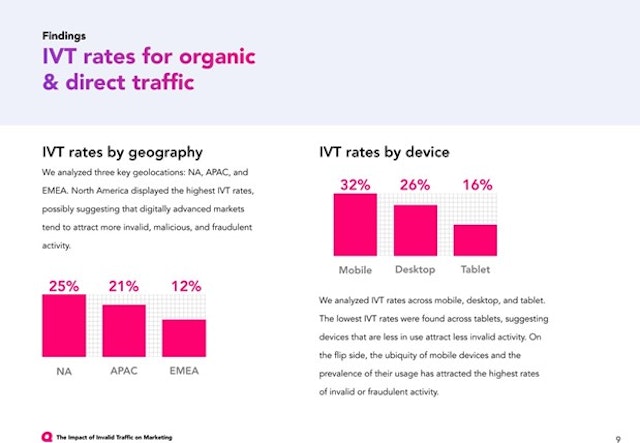How bots & fake users are killing the modern marketing operation
Bots and fake users are becoming an increasingly strategic concern for the modern day marketing organization. As recent studies have exposed, 27% of all organic and direct traffic on the internet comes from bots and fake users. This invalid traffic (IVT) includes everything from innocuous scrapers and crawlers to malicious bots and fake accounts, and all of it can pollute marketing funnels at all stages.

The issue of bots and fake users is more than just a security and IT problem
As marketers become more well-versed in the world of IVT, they begin to notice the specific ways it harms their initiatives and stands in the way of reaching their goals and KPIs.

The threat: decisions being made based on contaminated data.
Perhaps most concerning is the impact IVT has on data and analytics. Considering that today all business decisions are made based on data, the presence of bots and fake users can negate nearly every decision an organization makes. This is true for revenue projections, operational decisions, headcount, funnel metrics and everything in between. IBM research shows that $3.1tn is lost each year due to bad data. CHEQ’s study into data skewed specifically by IVT shows marketers lost $697bn annually due to bots and fake user activity.
But it doesn’t stop there; fake website traffic pollutes the entire conversion funnel.
Sales and marketing teams seek to prospect and qualify leads to determine their potential to convert into a customer. Bots and fake users severely hinder these efforts. IVT can appear legitimate by interacting with websites, filling out forms, engaging with content and other human-like actions. This causes sales teams to waste valuable time and resources nurturing leads that are not real. Data suggests that each year sales departments lose approximately 550 hours and $32,000 per sales rep from using bad prospect data.

And the paid marketing operation is suffering too.
Many organizations put budget toward advertising and marketing campaigns with the goal of seeing that investment payoff in the form of pipeline and revenue. However, when bots and fake users are present, this can pose serious issues for these initiatives. Specifically, IVT can drain budgets by interacting with advertisements, and can also pollute audiences until they are no longer usable.
This stands in the way of using these campaigns to drive sales and gauge interest levels. In fact, by calculating customer acquisition cost (CAC) to life time value (LTV) ratios across several verticals, and measuring that against average IVT rates, it was found that about $42bn in revenue opportunities is lost each year due to bots and fake users.
The issue of bots and fake users is more than just a security and IT problem. Since IVT impacts all areas of an organization, several departments are learning to prioritize go-to-market security as a strategic solution. By mitigating the risk of harmful web traffic, companies can ensure all assets are protected, and can focus their time on running their business.
The full report mentioned in this article, which includes IVT by industry, geolocation, device, and threat type, as well as detailed explanations on the impact this has on different organizational goals can be found here.

